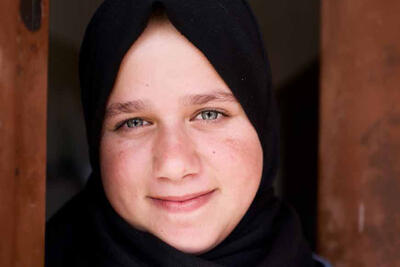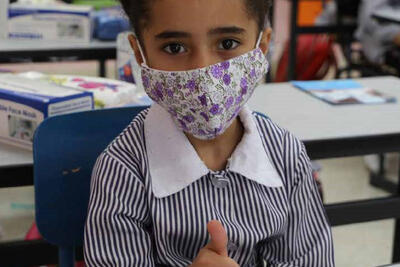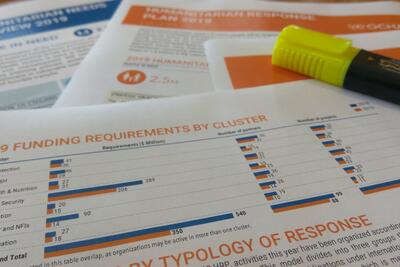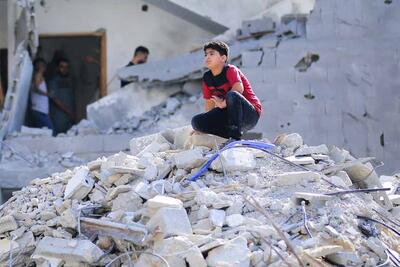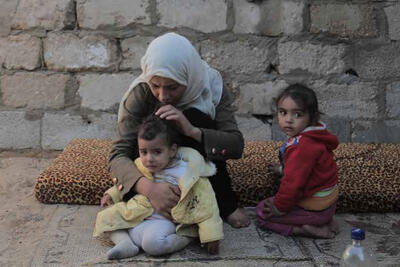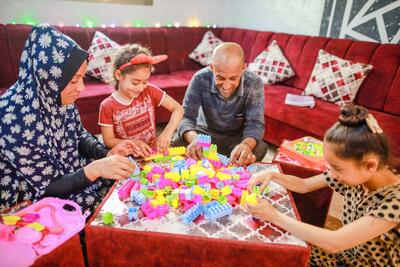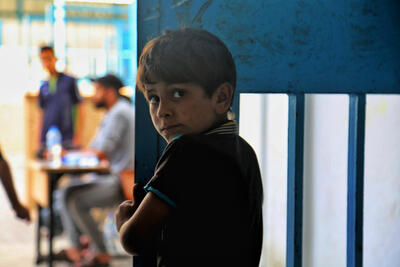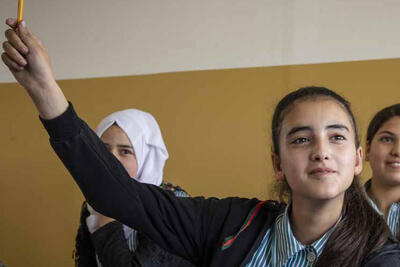We coordinate
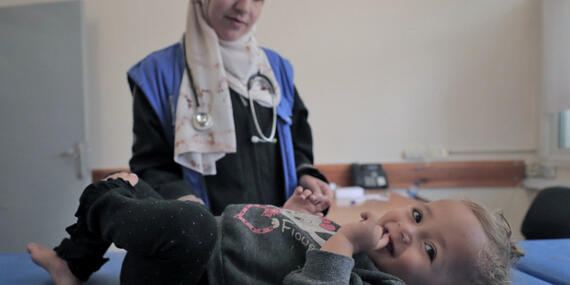
We coordinate humanitarian action in Gaza and the West Bank to expand its reach, improve prioritization and reduce duplication, ensuring that aid and protection are accessed by those who need them most.
The Humanitarian Programme Cycle
The Humanitarian Programme Cycle refers to a series of actions undertaken in the management of international humanitarian response operations. These must be conducted, to the extent possible, in collaboration with and in support of national and local authorities.
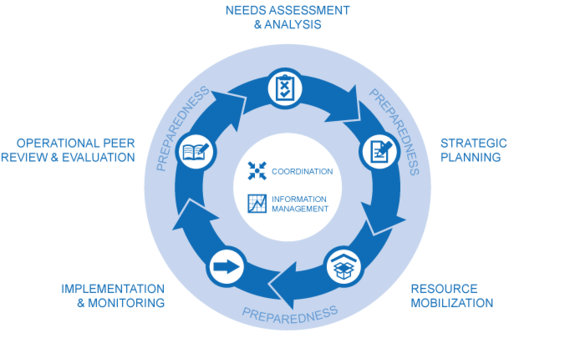
The actions in the cycle, described below, are inter-related and should be managed in a seamless manner using a coherent approach and a common set of tools.
- Emergency preparedness is a distinct element of, and underpins, the entire cycle.
- Timely, coordinated assessments and analysis identify the needs of affected people and provide the evidence base for planning the response.
- Coordinated planning allows for the formulation of strategic objectives, what needs to be done to meet them, and how much it will cost.
- Funding and other resources are mobilized for the system based on and in support of the strategic response plan.
- Monitoring of agreed output and outcome indicators and the tracking of financial information demonstrates results and informs decision-making about the plan.
While implementation of the cycle should be flexible and adaptable to different country situations, it must at a minimum address the above elements. Whenever possible, it should support national and local partners, including NGOs, civil society and communities, and complement or build on existing frameworks; it should contribute to a response that builds resilience to future disasters.
The Humanitarian Response Plan in the occupied Palestinian territory
The humanitarian community in the occupied Palestinian territory (oPt) has developed an annual humanitarian plan for the oPt every year since 2003. The Humanitarian Response Plan (HRP) primarily focuses on addressing humanitarian needs in the Gaza Strip as well as in Area C and East Jerusalem of the West Bank, where the most vulnerable populations have been identified and where the reach of the Palestinian Authority is most limited.
Humanitarian assistance in the oPt aims to address needs and vulnerability mostly arising from the policies and practices linked to the occupation and the blockade. Those targeted for assistance are those most in need of protection, access to essential services and interventions that will allow them to cope with the effects of the prolonged occupation and shocks.
At a minimum, the HRP aims to protect the rights and stabilize the situation of the protected population until longer term development and political solutions are found. The HRP complements national and international longer term development strategies, such as the Palestinian National Development Plan and the United Nations Development Assistance Framework (UNDAF).
Read more on the latest Humanitarian Response Plan here.
Available Humanitarian Response Plans:
Humanitarian Response Plan 2023
The humanitarian community in the occupied Palestinian territory (oPt) has developed a strategic plan for the oPt every year since 2003. The current Humanitarian Response Plan covers 2023 and focuses on addressing needs identified in the Humanitarian Needs Overview, in Area C, Hebron H2 and East Jerusalem in the West Bank and the Gaza Strip.
Developed amid a rise in the severity of needs and increasing challenges to the work of humanitarian actors, the 2023 Humanitarian Response Plan focuses on three strategic priorities:
Strategic Objective 1
The rights of Palestinians living under occupation, including those living under the blockade and other restrictions, are protected, respected and promoted in accordance with IHL and IHRL, while duty-bearers are increasingly held to account
Strategic Objective 2
The basic needs of vulnerable Palestinians living under occupation are met through the provision of quality basic services and improved access to resources, in accordance with the rights of protected persons under IHL
Strategic Objective 3
The capacity of vulnerable Palestinians to cope with and overcome protracted crisis, including from environmental threats, is supported, while solutions to violations and other root causes of threats and shocks are pursued
Resources
- Global humanitarian overview 2022
- Press release upon the launch of the 2023 HRP for the occupied Palestinian territory
- 2022 Multisectoral Needs Assessment
- More documents related to the Humanitarian Programme Cycle
Background
The humanitarian context of the oPt is unique amongst today’s crises and remains directly tied to the impact of the occupation, which marked its 55th year in June 2012.
People in need
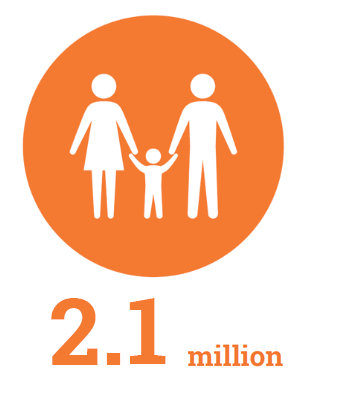
People Targeted
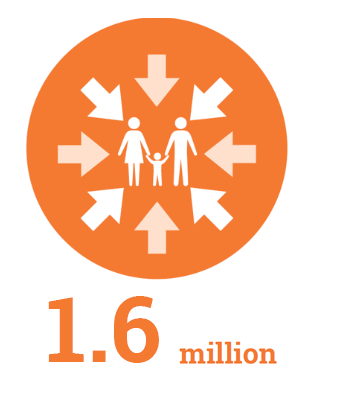
Requirements (US$)
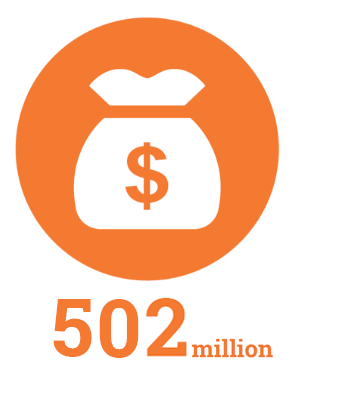
The humanitarian community has identified 2.1 million Palestinians as being in need for support. Through this plan, it aims to target 1.6 million of them, based on the maximum number of vulnerable people who can realistically be reached given highly-restricted capabilities in the current political and resource climate.
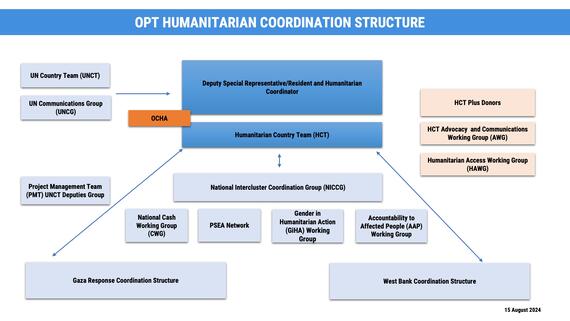
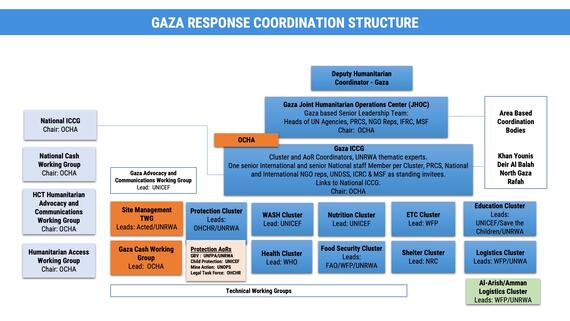
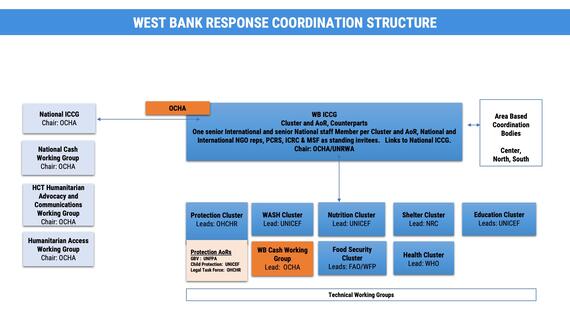
At the field level, the Resident/Humanitarian Coordinator (RC/HC) is responsible for designating Cluster Lead Agencies for all key humanitarian response sectors, in consultation with the HCT and the Emergency Relief Coordinator. The Inter-Cluster Coordination Group, composed of cluster and sector leads in the oPt, meets monthly in a meeting chaired by OCHA. In Gaza, the Inter-cluster group also meets on a monthly basis to discuss humanitarian coordination and operational issues.
Dates of the Inter-Cluster meetings can be viewed here.
For key coordination contact list, please click here.
The Clusters in the oPt
Thematic coordination groups are a key instrument of humanitarian response. They contribute to the HCT analysis by providing essential information from needs assessments and monitoring to support the HCT’s development of Strategic Objectives and other policy guidance. Thematic groups bring together all stakeholders working within a defined area of expertise, including local authorities, non-governmental organizations and UN agencies, and are the forum for coordination of every aspect of response formulation, including assessments, data management, strategic planning, setting technical standards, monitoring and reporting on the effectiveness of the response, and contingency planning. They are also actively engaged in humanitarian advocacy.


